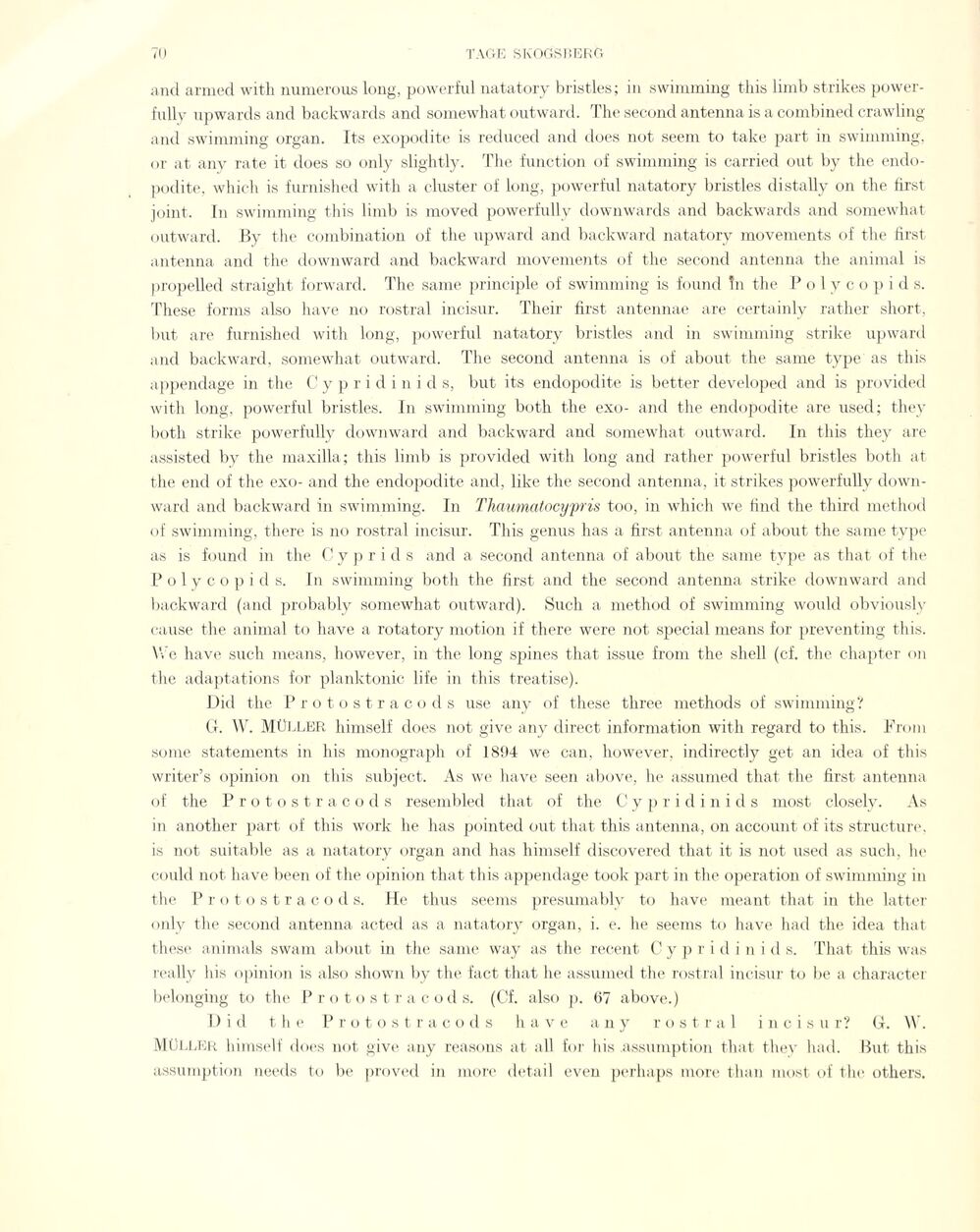
Full resolution (JPEG) - On this page / på denna sida - Sidor ...

<< prev. page << föreg. sida << >> nästa sida >> next page >>
Below is the raw OCR text
from the above scanned image.
Do you see an error? Proofread the page now!
Här nedan syns maskintolkade texten från faksimilbilden ovan.
Ser du något fel? Korrekturläs sidan nu!
This page has never been proofread. / Denna sida har aldrig korrekturlästs.
and armed with numerous long, powerful natatory bristles; in swimming this limb strikes
powerfully upwards and backwards and somewhat outward. The second antenna is a combined crawling
and swimming organ. Its exopodite is reduced and does not seem to take part in swimming,
or at any rate it does so only slightly. The function of swimming is carried out by the
endo-podite, which is furnished with a cluster of long, powerful natatory bristles distally on the first
joint. In swimming this limb is moved powerfully downwards and backwards and somewhat
outward. By the combination of the upward and backward natatory movements of the first
antenna and the downward and backward movements of the second antenna the animal is
propelled straight forward. The same principle of swimming is found în the Polycopids.
These forms also have no rostral incisur. Their first antennae are certainly rather short,
but are furnished with long, powerful natatory bristles and in swimming strike upward
and backward, somewhat outward. The second antenna is of about the same type as this
appendage in the Cypridinids, but its endopodite is better developed and is provided
with long, powerful bristles. In swimming both the exo- and the endopodite are used; they
both strike powerfully downward and backward and somewhat outward. In this they are
assisted by the maxilla; this limb is provided with long and rather powerful bristles both at
the end of the exo- and the endopodite and, like the second antenna, it strikes powerfully
downward and backward in swimming. In Thaumatocypris too, in which we find the third method
of swimming, there is no rostral incisur. This genus has a first antenna of about the same type
as is found in the C y p r i d s and a second antenna of about the same type as that of the
Polycopids. In swimming both the first and the second antenna strike downward and
backward (and probably somewhat outward). Such a method of swimming would obviously
cause the animal to have a rotatory motion if there were not special means for preventing this.
We have such means, however, in the long spines that issue from the shell (cf. the chapter on
the adaptations for planktonic life in this treatise).
Did the Protostracods use any of these three methods of swimming?
G. W. Müller himself does not give any direct information with regard to this. From
some statements in his monograph of 1894 we can, however, indirectly get an idea of this
writer’s opinion on this subject. As we have seen above, he assumed that the first antenna
of the Protostracods resembled that of the Cypridinids most closely. As
in another part of this work he has pointed out that this antenna, on account of its structure,
is not suitable as a natatory organ and has himself discovered that it is not used as such, lie
could not have been of the opinion that this appendage took part in the operation of swimming in
the Protostracods. He thus seems presumably to have meant that in the latter
only the second antenna acted as a natatory organ, i. e. he seems to have had the idea that
these animais swam about in the same way as the recent Cypridinids. That this was
really his opinion is also shown by the faet that he assumed the rostral incisur to be a character
belonging to the Protostracods. (Cf. also p. 67 above.)
Did the Protostracods have any rostral incisur? G. W.
MULLER himself does not give any reasons at all for his assumption that they had. But this
assumption needs to be proved in more detail even perhaps more than most of the others.
<< prev. page << föreg. sida << >> nästa sida >> next page >>